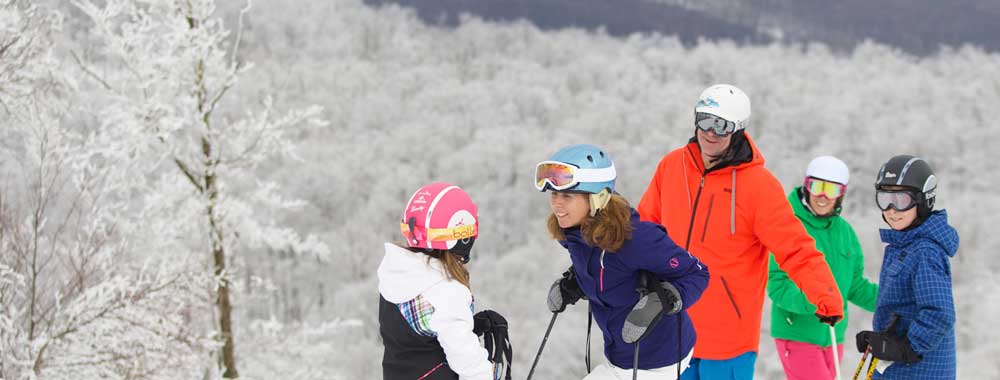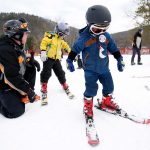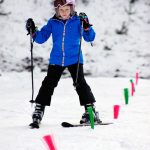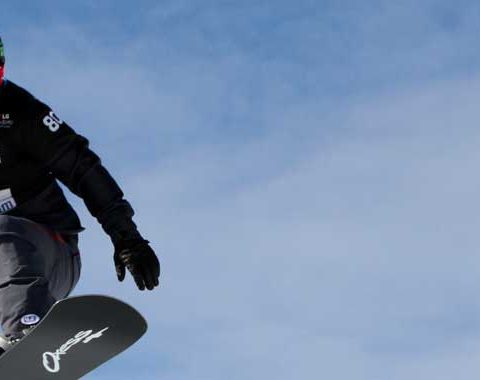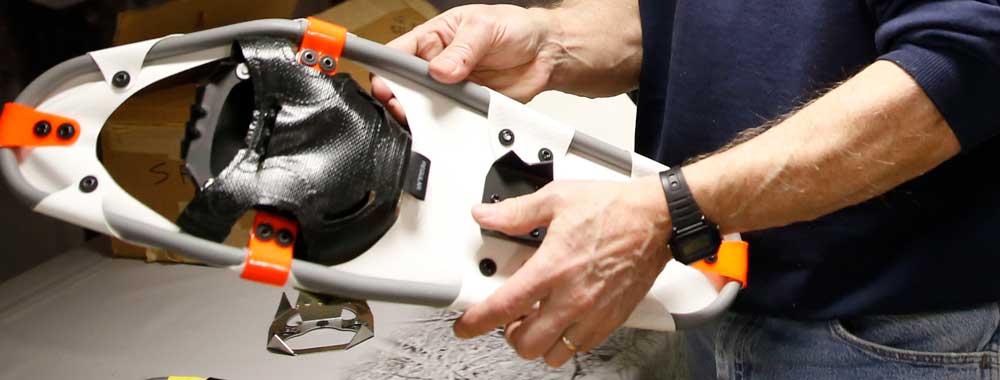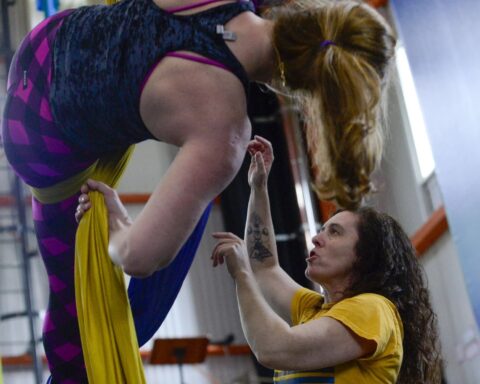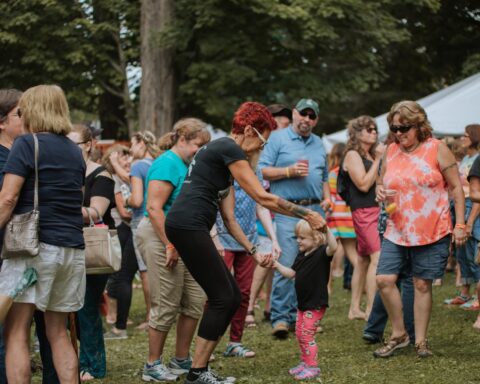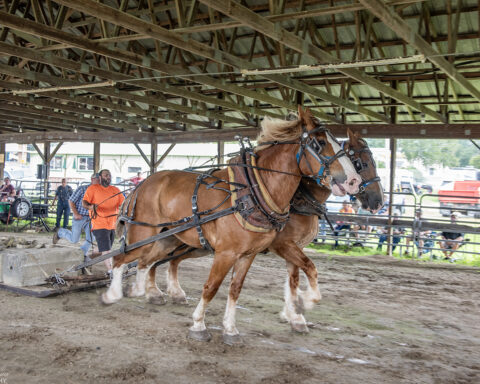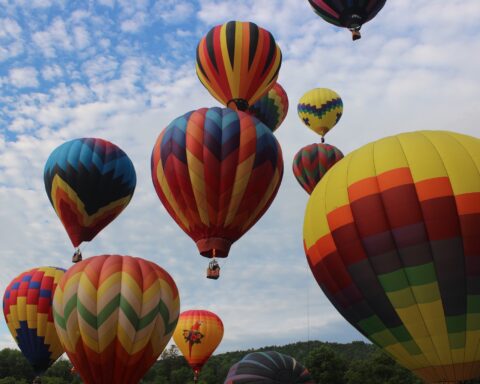
By Scott Stafford
When the first snow falls, dozens of men and women begin scrambling up and down local hills and mountains of local ski resorts in a frantic effort to manufacture tons of artificial ground cover as quickly as possible.
They are the snow makers.
And while that may sound mystical, it is actually a stressful, thankless task often done in the dark and always done in the freezing cold.
“They are the unsung heroes of the ski resort business,” declared Jim Van Dyke, vice president of environmental sustainability at Jiminy Peak, and a habitual snow maker himself.
Once the temperature sinks below 20 degrees, it hits the optimal temperature to turn water and cold air into snow and the real action begins.
At the start of the season, crews have to quickly make enough snow for a good base before they can start opening trails to skiers and snowboarders. That takes a minimum of two to three days with the right temperatures.
“Our snow makers are hyped up and very excited,” said Sherry Roberts, owner of Bousquet Mountain. “They can’t wait. And it takes all hands on deck for startup. When it’s cold enough, we go 24 hours.”
Before the snow makers head out, they don their warm, water resistant, tough outer clothing, helmets, gloves and heavy duty boots with crampons. They carry a blow torch and a beater bar, to melt or break ice. They ride the chair lift to the top. They then walk down the mountain on foot, following the water and air lines.
They are making sure the hoses are not leaking or jammed, and checking each snow gun to make sure the nozzle hasn’t jammed or frozen — and that they are aimed toward the ski trails.
When there is a problem, a clogged snow gun or a clogged water line, that routine becomes a focused effort to melt the ice, tap out the frozen water in the gun, and get it back up and working again.
Once they make it all the way down the mountain and back to the base, they stop in the lodge for a warm up, maybe a hot drink and a bite to eat.
Then it’s back up the mountain for another run.
Early in the season all this work happens only at night, as the temperatures are too warm in the daylight. But as the season wears on the temperatures in the daytime get cold enough to make it a 24-hour battle.
“Snow makers thrive on difficulty, the harsh environment, the darkness and the cold,” Van Dyke said. “But when it gets really cold and windy, we have to keep track of who’s where and how long they’ve been out from a health and safety standpoint. We might swap someone out if it’s real bad.”
The base is made of wetter, heavier snow, which in large quantities is more resilient to warm temperatures and rain, Van Dyke noted. Then after three or more feet of base snow, they add lighter fluffier snow on top.
Erick Bartlett, one of the managers at Bousquet, is a key member of their snowmaking crew.
“You’re most certainly going to be soaking wet at some point,” he said. “Snow making may sound magical, but it’s a dirty, wet job.”
In the off season, all seven Berkshire County ski areas were busy upgrading equipment and improving trails.
Ski Blandford — now under new management and owned by the same folks who own Ski Butternut — renovated its lodge and put a multi-year capital improvement plan put in place, according to marketing director Dillon Mahon.
During the off-season at Ski Butternut, crews dredged a mid-mountain retention pond to add more depth and hold more water, which will allow them to make more snow continuously, Mahon said.
He noted that skiers are also enjoying a renovated upper lodge with enhanced wifi service.
Bousquet Mountain greeted its regulars with a newly upgraded chair lift, which delivers faster, smoother rides up the mountain, Roberts said. And upgrades to the snow guns will mean more snow in less time.
Over the summer, Catamount ski area added more snow guns and a mid-mountain water pump to enhance its snow making capacity over the summer, marketing director Rich Edwards said.
At Jiminy Peak Mountain Resort, there are a number of new features, said marketing director Katie Fogel.
There is a new fun zone for younger skiers and snowboarders, and a play area for youngsters who just want to play in the snow.
The ski resort, which is completely powered by renewable energy sources, has also added several electric car charging stations.
At Otis Ridge, skiers are enjoying a newly renovated restaurant, The Grouse House, with a new menu, business manager Jamie Carr said.
Need to know…
Ski Blandford
41 Nyebrook Road, Blandford, Mass.
Trails: 29
Full-day tickets range from $20-$45
Information: 413-848-2860 or skiblandford.com
Bousquet Mountain
101 Dan Fox Drive, Pittsfield, Mass.
Trails: 23
Full-day tickets: $25 ($10 Thursdays)
Information: 413-442-8316 or bousquets.com
Ski Butternut
380 State Road, Great Barrington, Mass.
Trails: 22
Full-day tickets range from $25-$60
Information: 413-528-2000 or skibutternut.com
Catamount Ski Area
Route 23, South Egremont, Mass.
Trails: 36
Full-day tickets range from $20-$68
Information: 413-528-1262 or catamountski.com
Jiminy Peak Ski Resort
37 Corey Road, Hancock, Mass.
Trails: 45
Full-day tickets range from$76-$83
Information: 413-738-5500 or jiminypeak.com
Otis Ridge
159 Monterey Road, Otis, Mass.
Trails: 10
Full-day ticket: $40
Information: 413-269-4444 or otisridge.com
Scott Stafford has been a professional journalist and photographer for more than 30 years. Based in Williamstown, he covers the Northern Berkshires for The Berkshire Eagle.
